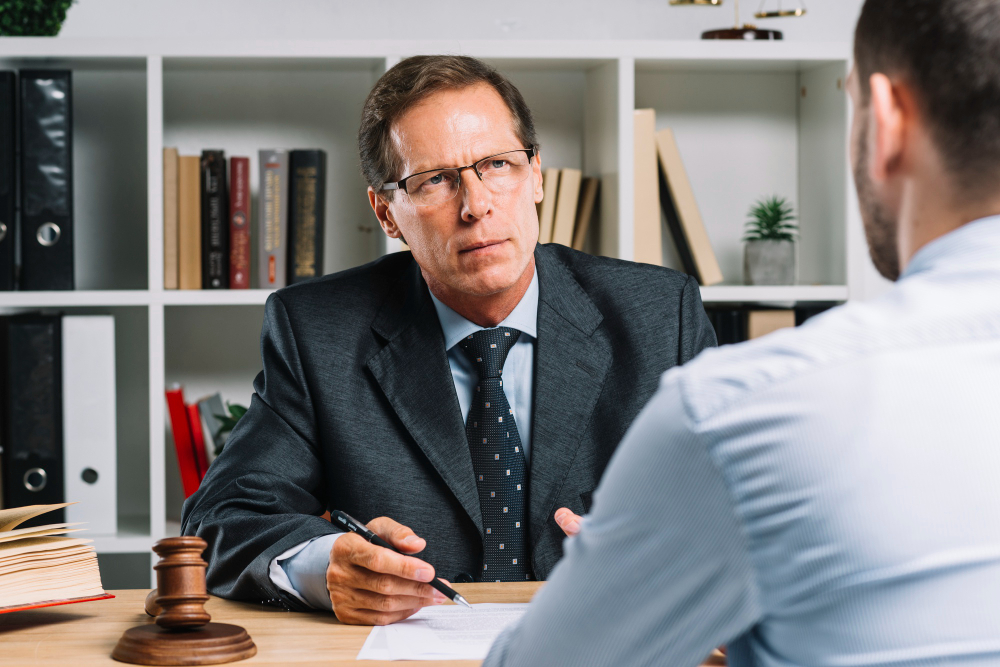Key Takeaways
- • Comprehensive evidence collection is crucial for a successful personal injury claim.
- • Medical, digital, testimonial, and photographic documentation all play vital roles.
- • Personal notes and detailed financial records can strengthen your case for compensation.
- • Utilizing relevant official and expert support will help validate claims and disputes.
Table of Contents
- Medical Records and Bills
- Accident Reports and Official Documentation
- Witness Statements
- Photographic and Video Evidence
- Digital Evidence
- Expert Testimony
- Financial Documentation
- Personal Notes and Journals
When an accident occurs, the aftermath can be overwhelming—filled with medical appointments, insurance calls, and emotional stress. During this critical time, taking deliberate steps to document every detail can make a significant difference in protecting your rights. Pursuing a personal injury claim often hinges on the quality and depth of the evidence you can provide. Whether you’re dealing with an auto collision, workplace accident, or a fall on someone else’s property, gathering detailed and organized documentation can significantly improve the outcome of your case. The proper evidence not only substantiates your claims and damages but also increases your credibility in the eyes of insurers, opposing parties, and ultimately, the court.
From the very start, being proactive about collecting supporting materials—photos, records, reports, and more—can help ensure you have a robust case, no matter how complicated the situation may be. Neglecting to gather comprehensive evidence gives opposing insurance companies opportunities to dispute injuries or offer minimal settlements.
Each piece of evidence tells part of your story—how the incident occurred, the impacts you suffered, and the financial and emotional toll it has taken. When all the details are well documented, your case gains the structure and support needed for a favorable resolution. For a deeper dive into maintaining and preparing for claims, resources such as Nolo’s guide to personal injury claims can help you understand the process further.
Medical Records and Bills
Medical evidence is the anchor of any serious injury claim. Following an accident, seek evaluation by a healthcare professional as soon as possible and maintain meticulous records of every appointment, treatment, and recommendation. Medical documents validate your injuries and help establish a timeline from accident to recovery.
- • Doctor’s notes and diagnostic summaries
- • Emergency room and hospital discharge reports
- • Imaging (X-rays, CT scans, MRIs)
- • Prescriptions and itemized medical bills
- • Physical therapy and rehabilitation notes
Insurers routinely dispute the severity of injuries when gaps or inconsistencies appear in medical documentation. Securing and organizing these records from various providers demonstrates transparency and the legitimacy of your suffering.
Accident Reports and Official Documentation
Objective third-party documentation forms the factual backbone of your case. Accident and incident reports filed by police, workplace supervisors, or property managers include initial summaries, officer or investigator notes, and preliminary fault assessments. This information can provide pivotal leverage should a dispute arise about what truly happened.
- • Police reports at the scene.
- • Incident documentation from property owners or business managers
- • Workplace injury logs
Obtain these reports as soon as possible to prevent details from growing vague or facts from being contested.
Witness Statements
Eyewitness testimony can be decisive, especially when liability is questioned. Secure names, phone numbers, and statements from bystanders, passengers, or employees who observed the event. Written and recorded statements made shortly after the accident help memorialize what was seen and can counter inaccurate accounts from other parties.
- • Gather contact information at the scene.
- • Request immediate written or recorded statement.s
Witness accounts offer independent perspectives, reinforcing your account of the accident.
Photographic and Video Evidence
Photos and videos are the most persuasive evidence for accident and injury cases. Capture clear images of the scene, any property or equipment involved, road or environmental hazards, your injuries, and damage to vehicles or structures. Take photos throughout your recovery process to demonstrate the evolution of wounds and lasting effects.
- • Scene photos—hazards, positions, debris
- • Close-ups of injuries, from the day of the event through recovery
- • Surveillance camera or dashcam footage, if available
Visual documentation can resolve disputes quickly and may be pivotal if your claim proceeds to trial. For more tips on what to photograph after an accident, see information from AllLaw’s guide on negotiating a personal injury settlement without a lawyer.
Digital Evidence
Modern accidents often involve digital communications. Save relevant texts, emails, or social media posts documenting the incident or the aftermath. These can show admissions of fault, communications with insurers, or changes in your routine related to the injury.
- • Text messages and emails regarding the accident
- • Social media posts referencing the event or your injuries
Screen capture meaningful conversations and save them in secure, accessible formats to use as supporting evidence.
Expert Testimony
When injury cases are complex or technical, testimony from credentialed experts can clarify critical issues. Medical professionals can attest to your injury’s severity and long-term impacts, while accident reconstructionists or engineers analyze how and why the event occurred. These expert insights add authority and credibility, particularly if the defense contests your claims.
- • Medical experts on cause and prognosis
- • Reconstruction or engineering specialists
Even if initial claims are clear-cut, expert validation can make all the difference when defending your version of events in court or mediation.
Financial Documentation
Accurately documenting the financial ramifications of your injury is essential for obtaining full compensation. This extends beyond medical bills to lost wages and ongoing economic consequences such as reduced earning capacity or costs for long-term care.
- • Pay stubs, tax returns, and proof of income before and after the injury
- • Invoices and receipts for all out-of-pocket expenses due to the accident
This documentation enables calculating current and future damages so your compensation can match your actual losses.
Personal Notes and Journals
Keeping a consistent journal is highly effective for demonstrating lasting impacts such as pain, emotional distress, or lost enjoyment of life. In your own words, detail your daily struggles and missed milestones or life disruptions. This narrative can support requests for non-economic damages such as pain and suffering, which insurers often undervalue.
Building a comprehensive case requires diligence long before appearing in court. By methodically gathering, organizing, and preserving all pertinent evidence—from official documents to personal records—you arm yourself with the best chance of success in your personal injury matter. For more strategic legal advice and updates, visit trusted resources such as the American Bar Association’s Insurance Coverage Litigation Committee.

